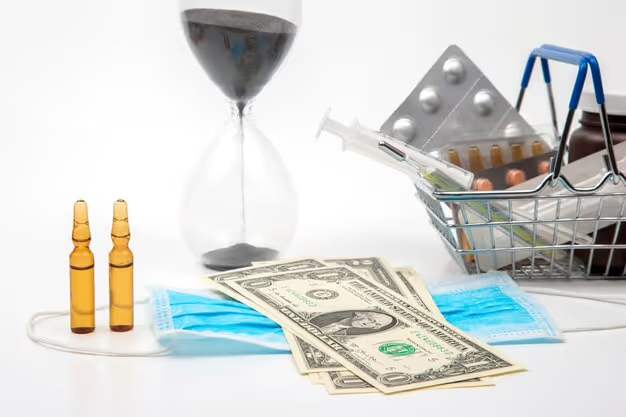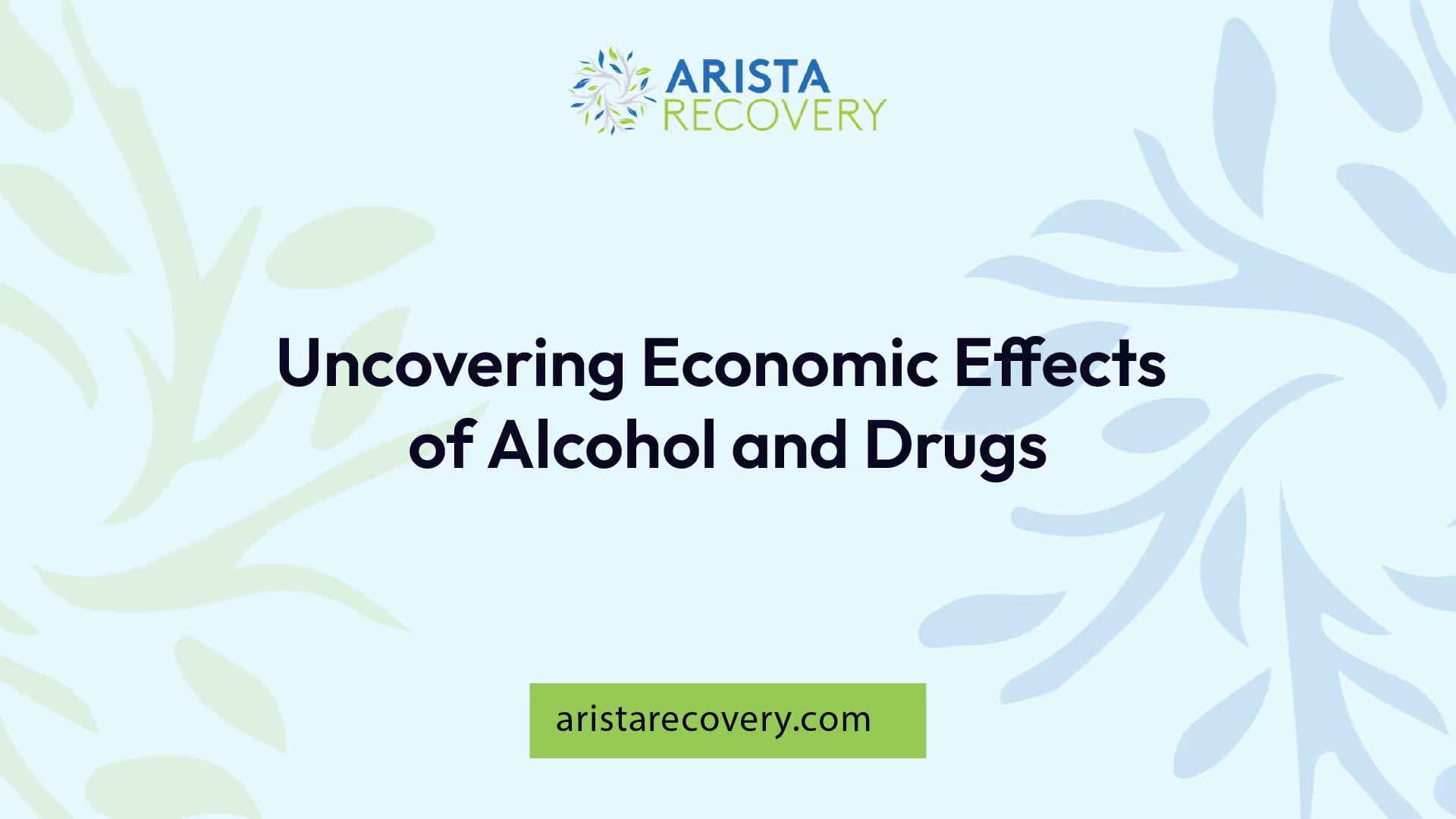Uncovering Economic Effects of Alcohol and Drugs

Substance Abuse Economic Impact
Overview of Economic Effects
Substance abuse, which includes the misuse of alcohol, prescription medications, and illicit drugs, has far-reaching economic consequences. The economic effects of alcohol and drugs extend beyond personal health costs; they affect productivity, workplace dynamics, healthcare expenses, and social services.

The impact of substance abuse can be observed in various domains, such as increased absenteeism among workers, decreased job performance, a higher likelihood of workplace accidents, and higher healthcare costs. According to a report, these factors can create a cycle that strains interpersonal relationships and increases turnover rates in organizations.
GDP Impact
The economic ramifications of substance abuse also have a significant effect on a nation's Gross Domestic Product (GDP). Health care costs associated with substance use disorders can be staggering, sometimes exceeding criminal justice costs in certain countries. This situation highlights the larger societal costs tied to addiction and substance abuse.
The following table summarizes the impact of substance abuse on GDP through various channels:
Economic FactorImpact DescriptionHealth Care CostsHigh expenditures for treatment and emergency services related to substance abuse.Productivity LossDecreased workforce output due to impaired cognitive function and absenteeism.Criminal Justice CostsIncreased spending on law enforcement and rehabilitation for substance-related offenses.Social ServicesAdditional funds required for homelessness and social welfare due to addiction-related problems.
Research on substance use also indicates a correlation between unemployment rates and substance use patterns. During economic downturns, an uptick in substance use disorders often occurs, leading to further economic strain [2].
Overall, the economic effects of alcohol and drugs create a cycle that negatively impacts both individual lives and the broader economy, illustrating the urgent need for effective recovery strategies and policies.
Costs of Alcohol Use
Understanding the economic implications of alcohol use is critical for addressing issues related to addiction and recovery. The costs associated with alcohol use can be categorized into direct and indirect costs.
Direct Costs Breakdown
Direct costs are those that can be easily attributed to alcohol consumption. These include expenses related to healthcare, crime, and traffic accidents. According to recent analyses, approximately 38.8% of the total costs incurred are categorized as direct costs, amounting to about 317.2 Int$ per adult.
Direct Cost ComponentsPercentage of Direct CostsHealthcare Costs46.2%Crime-Related Costs-Traffic Accidents-
Across studies, healthcare expenses are reported to constitute nearly half of all direct costs linked to alcohol use, indicating a substantial burden on the health system [3].
Indirect Costs Breakdown
Indirect costs refer to the broader economic impacts that arise due to alcohol consumption, particularly in relation to productivity and premature mortality. Indirect costs account for a significant portion, approximately 61.2% of total costs, equating to around 500.4 Int$ per adult.
Indirect Cost ComponentsPercentage of Total CostsProductivity Losses32.3%Premature Mortality-Other Indirect Costs-
The majority of these indirect costs stem from loss of productivity, whether due to workplace absenteeism or decreased efficiency in work settings [3]. Understanding both direct and indirect costs is essential for evaluating the full economic effects of alcohol and drugs on society.
Impact on Workplace Productivity
Substance abuse, including alcohol and drugs, significantly affects workplace productivity. The economic effects of alcohol and drugs manifest not only in direct costs but also through various productivity-related challenges faced by employers and employees alike.
Workplace Effects
Substance abuse can lead to impaired cognitive function, affecting decision-making abilities essential for workplace efficiency. Employees struggling with substance misuse often see a decline in job performance, which can overwhelm colleagues and lead to a strained work environment. Various studies confirm that alcohol and drug use correlate strongly with increased absenteeism, turnover, and other negative behaviors at work [1].
Effects on Workplace ProductivityRate of ImpactDecreased Job PerformanceHighIncreased TurnoverModerateStrained Interpersonal RelationshipsHighIncreased Healthcare CostsModerate
Absenteeism and Accidents
The relationship between substance use and absenteeism is robust, with studies revealing that employees who use illicit drugs have higher absence rates compared to their peers [4]. Alcohol consumption also contributes to increased absenteeism and workplace accidents. In fact, research has shown that employees testing positive for drugs or alcohol during mandatory screening often accumulate more sick hours than those who do not.
In the transportation sector, the consequences of substance abuse can be particularly severe. For example, the National Transportation Safety Board reported that impairment from substances was a factor in 87% of cases involving drivers who tested positive for drugs in heavy-truck crashes [4].
Absenteeism and Accident StatisticsPercentageEmployee Absenteeism Rates (Drug Users)Higher than Non-UsersWorkplace Accidents linked to Substance UseSignificant IncreaseAlcohol Impairment in Truck Accidents87% of Cases
These findings underline the substantial economic and productivity impacts that substance abuse can impose on workplaces, ultimately leading to financial losses for employers and reduced welfare for employees.
Economic Costs Comparison
Understanding the economic effects of alcohol and drugs necessitates a comparison of their costs. This section outlines the financial impacts of alcohol versus drugs, as well as the costs associated with healthcare and the criminal justice system.
Alcohol vs. Drug Costs
The economic costs of alcohol consumption have been notably high. Adjusting for omitted components, the estimated economic costs were about 1306 Int$ per adult, or 2.6% of the GDP. The breakdown of these costs shows that approximately one-third (38.8%) were incurred through direct costs, while losses in productivity accounted for the remaining 61.2% [3].
In a comparative analysis of healthcare expenses among individuals with substance use disorders, estimated annual hospital costs reveal significant differences based on the type of substance used:
Substance Use DisorderEstimated Annual Hospital CostsAlcohol Use Disorders$1,122Marijuana Use Disorders$1,057Other Illicit Drugs$2,783
Figures from NCBI illustrate the varying economic impacts of these disorders on healthcare expenditures.
Health Care vs. Criminal Justice Costs
Healthcare-related costs make up nearly half of all direct costs arising from alcohol consumption. However, it is essential to factor in the costs associated with the criminal justice system, which are also significant and can sometimes exceed healthcare costs in certain countries [3].
The economic burden of alcohol includes both types of costs, as shown in the following table:
Cost TypePercentage of Total Economic CostsHealthcare Costs50% (approximately)Criminal Justice CostsVariable; can exceed healthcare costs in some regions
Understanding these differences in costs between alcohol and other drugs, as well as between healthcare and criminal justice systems, offers valuable insights into the broader economic implications of substance use and could inform policies aimed at addressing these challenges.
Substance Use Disorders and Healthcare
Understanding the economic effects of alcohol and drugs extends beyond immediate financial costs to encompass the broader implications for healthcare and employers.
Medical Expenditure Breakdown
Substance use disorders (SUDs) significantly contribute to healthcare expenditures in the United States. The estimated annual per person hospital costs associated with various substance use disorders highlight the financial impact on the healthcare system.
Substance Use DisorderAnnual Hospital Costs per Person ($)Alcohol Use Disorder1,122Marijuana Use Disorder1,057Other Illicit Drugs2,783
These costs indicate that those with substance use disorders, particularly related to illicit drugs, incur considerably higher medical expenses than their peers. In 2018, the total annual medical costs attributed to SUDs in the US employer-sponsored insurance population amounted to $35.3 billion, with alcohol-related disorders costing $10.2 billion and opioid-related disorders accounting for $7.3 billion. The presence of SUDs in the workforce undeniably imposes a substantial financial burden on employers and health insurance payers. According to research, substance use and related disorders contribute to nearly 20% of hospital readmissions within Medicaid, further worsening healthcare costs.
Implications for Employers
Employers bear a significant portion of the economic burden associated with substance use disorders. Increased healthcare costs directly affect company expenses, as a higher prevalence of SUDs leads to more frequent hospital visits, longer sick leaves, and overall reduced productivity.
Furthermore, the impact of substance use extends to workplace safety, as employees with unresolved substance use issues may experience accidents or errors, leading to additional insurance costs and potential legal liabilities. The Affordable Care Act (ACA) has implemented strategies to manage these challenges effectively by promoting integrated substance use services within primary care. This model aims to reduce the economic burden associated with substance use by addressing issues early and preventing costly hospitalizations.
The economic effects of alcohol and drugs have far-reaching implications, influencing healthcare expenditures and employer productivity alike. Addressing substance use disorders through effective healthcare strategies can alleviate some of these pressures on both public health systems and corporate environments.
Unemployment and Substance Use
Examining the relationship between unemployment and substance use provides critical insights into the underlying economic effects of alcohol and drugs.
Risk Factors
Unemployment has been identified as a significant risk factor for relapses following treatment for substance use disorders. Studies indicate that unemployed individuals are more likely to experience relapses and that these relapses are often more severe when compared to their employed counterparts. Although evidence specifically linking unemployment to alcohol or illegal drug use is limited, research on smoking cessation highlights a similar trend. Unemployed individuals demonstrated reduced success rates in quitting smoking [2].
The influence of unemployment on substance use patterns is also notable. Economic fluctuations and business cycles have shown a correlation with substance use disorders, with downturns in the economy associated with higher rates of use and upswings linked to decreased prevalence. This anticyclical effect emphasizes how job stability can impact one's relationship with substances.
FactorImpact on Substance UseUnemploymentHigher likelihood of relapseEmployment StatusEmployment correlates with lower relapse severityEconomic CycleDownturns linked to increased substance use
Impact on Rehabilitation
The challenges of unemployment extend into the rehabilitation process for those recovering from substance use disorders. Lack of stable employment can hinder access to necessary treatment resources, including healthcare and psychological support. Additionally, the stress and financial strain associated with unemployment can act as a trigger, increasing the risk of returning to substance use as a coping mechanism.
Moreover, research suggests that smoking cessation efforts are less successful among unemployed individuals compared to those who are employed, highlighting how job security can play a vital role in recovery. This underscores the importance of addressing unemployment as part of comprehensive treatment plans for substance use disorders.
Employment StatusEffects on RehabilitationEmployedHigher likelihood of successful recoveryUnemployedIncreased risk of relapse, difficulties in accessing treatment
Understanding these dynamics is essential in addressing the economic effects of alcohol and drugs. By recognizing the interconnections between unemployment and substance use, stakeholders can develop more effective strategies to support individuals in recovery and promote successful rehabilitation outcomes.
You’re not alone in this.
When mental health challenges and addiction intersect, it can feel isolating. At Arista, we offer compassionate, evidence-based, and trauma-informed care to help you heal, grow, and move forward.
You’re not alone in this.
When mental health challenges and addiction intersect, it can feel isolating. At Arista, we offer compassionate, evidence-based, and trauma-informed care to help you heal, grow, and move forward.
Support that moves with you.
You’ve taken a brave first step. At Arista Recovery, we’re here to help you continue with best-in-class care designed for long-term healing and support.
.webp)






